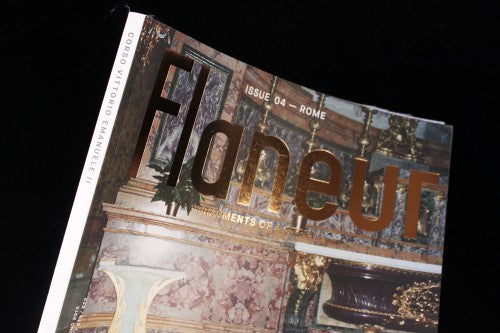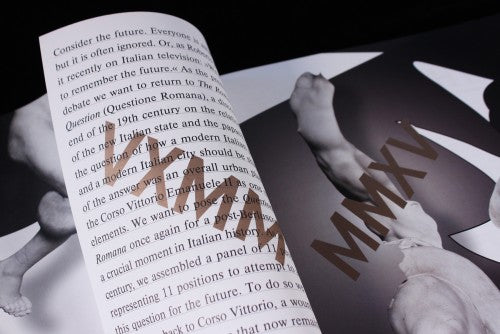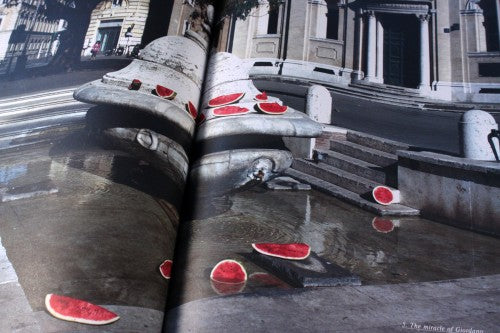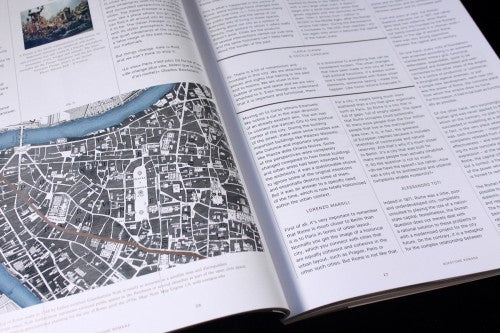
Magazine of the Week: Flaneur #4

One of the luxuries of publishing in the independent sphere is the time to make your magazine. While the mainstream business, by necessity, relies on structure and process – hitting a weekly or monthly deadline demands this in terms of both editorial workflow and page planning – the smaller and more agile independent publisher can adapt issue by issue. My favourite indies take advantage of this, and our latest Magazine of the Week is a great example of a magazine doing just that.

We’ve featured Flaneur before, of course, but with this fourth issue the magazine has taken major steps forward in its identity and clear presentation of its concept. In my recent QVED speech I noted a new sector of small magazines that were superceding their independent roots and emerging as a new category of publication. With larger readerships and ambitions than smaller indies, yet still with that independent spirit separating them from the mainstream, these magazines offer an exciting way forward.
Whether or not Flaneur quite makes it into that new category their next few issues will clarify; for now, this latest addition to the series promises the only way is up. Each issue is created from a single street, the team working locally and researching and building the magazine to reflect what they discover. Following Berlin, Leipzig and Montreal, they now find themselves in Rome.
But not tourist Rome; the chosen street, Corso Vittorio Emanuele II, is a huge thoroughfare that cuts through central Rome, in its time (it was built in 1886) a controversial addition to the city, slicing through several buildings. It is apparently unloved by locals, ‘a wound in the historical centre of Rome that remains oddly detached from the Roman people.’

The magazine addresses this issue directly with the first of four parts to the issue, a lengthy discussion between architects, critics and other specialists echoing an original forum established in the 19th century (and from which plans for the city that included the building Corso Vittorio Emanuele II were formulated). This is the most concrete part of the issue, an in-depth examination of the city involving history and futurism.

Other parts if the issue are far lighter in tone; snippets of overheard conversation are noted over photo-story layouts and scattered through the issue (above); a tourist guide shares his experience of the street; a series of interviews with local workers give provide insight into everyday life. Other collected fragments include a note of the sounds experienced walking down the street.

Photographer Fabrizio Amoroso recreates ‘miracles’ on the street (above, below, note chapter heading on small inserted page).


And artist Carlo Gabriele Tribbioli sets himself the task of catching a fish in the Tibor, as it dissects the Corso Vittorio Emanuele II. An eight-page foldout section (above) records the experience in extreme detail as he takes days to finally catch a small fish.

The design is wonderfully varied and chaotic, generally un-stylish in a very stylized way. But the typefaces and layouts respond to the content: the opening forum part mentioned above is very tidy and well-designed (above), worthy of any contemporary magazine. Later parts are deliberately unsubtle and shouty (below).

Flaneur is one of several magazines that move to different locations to produce each issue. This has almost become a genre in its own right: Boat, Matter and Local Quarterly all come to mind: part travel, part anthropology, part art project. Each example has different parameters and goals, but it seems a coming together of globalism, easy air travel and the internet have introduced a new curiosity about other places. It’s easy to visit anywhere today, so now the desire is to find the real place.
What’s unique about Flaneur, though, is the way the editorial and design teams use each street to build a unique editorial experience each time. They create a world of different pieces that, like a puzzle, add up to a complex message. Theirs is not a world of traditional photo-reportage and writing (though both feature), but rather a coming together of multiple disciplines to build a picture of place larger than the sum of its parts.
There's a deliberate blurring of lines between the real and the fantastical, emphasising their belief in the subjective – they promise ‘This could be Corso Vittorio Emanuele II’. But perhaps the most exciting thing is the way it speaks to a more general experience of city life. I already look forward to the results of their upcoming trip to Athens for issue five.
Review by Jeremy Leslie


